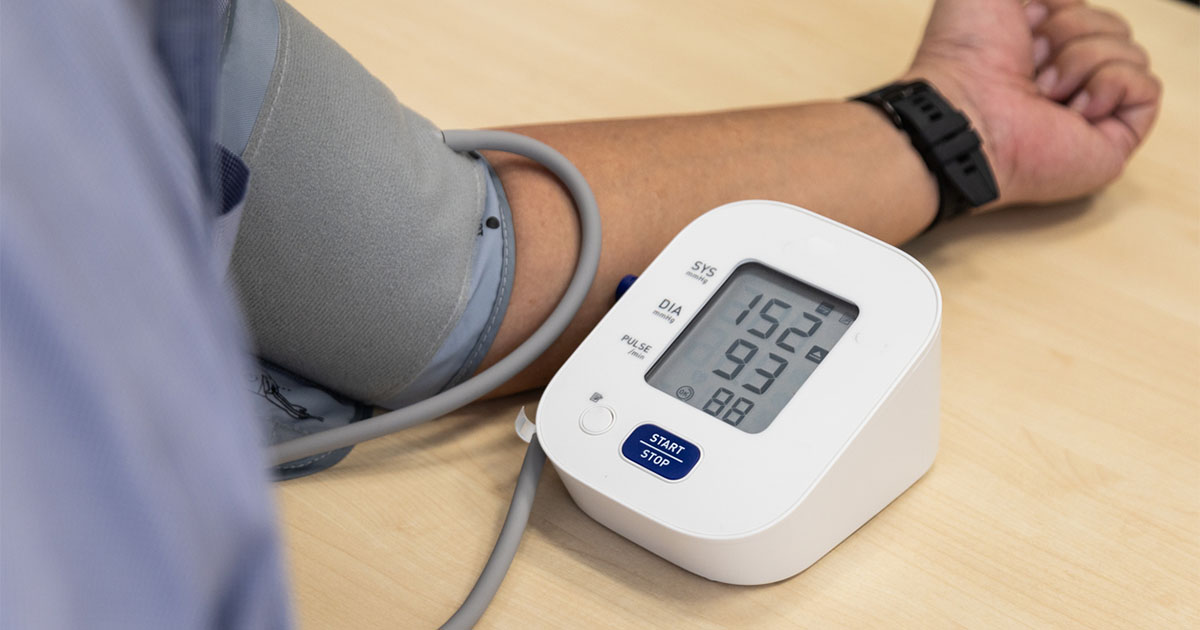Diabetic retinopathy is a well-documented complication of both type 1 and type 2 diabetes. The characteristics of diabetic retinopathy were described by Hermann von Helmholtz in 1851, shortly after the invention of the ophthalmoscope. By 1884, retinopathy was thought “to be rare but with a very unfavourable prognosis for vision” (Klein and Klein, 2006); now, diabetic retinopathy is the most common cause of blindness within the western world (World Health Organization [WHO], 2011).
Landmark trials such as the DCCT (Diabetes Control and Complications Trial; Nathan et al, 2009), UKPDS (United Kingdom Prospective Diabetes Study; Stratton et al, 2000) and EURODIAB study (Porta et al, 2001) have helped us to identify many of the factors influencing the development of diabetic retinopathy and the treatments available for it; effective screening and early intervention are vital for identification of the disease. If detected at an early stage, diabetic retinopathy can be managed and treated. In view of this, along with good glycaemic control and blood pressure regulation, regular eye examinations should be an integral part of ongoing diabetes care.
The psychological burden of developing diabetic retinopathy is ever-present among people with diabetes: “fear of visual loss is preoccupying and intense for a substantial proportion of the” population with diabetes (Luckie et al, 2007). And for those who go on to develop visual problems, difficulties can occur in all aspects of life, including the daily management of diabetes.
The St Vincent Declaration
The St Vincent Declaration is a set of goals and 5-year targets for the care of people with diabetes published following an international conference held by the WHO and the International Diabetes Federation (IDF) to identify challenges caused by the increasing prevalence of diabetes (WHO and IDF, 1990).
One of the goals was to reduce incidence of diabetes-related blindness by one-third or more in the diabetes population. Many developed countries have long introduced robust retinopathy screening programmes; however, it is only since 2013 that such a service has been implemented here in the Republic of Ireland (ROI).
The Irish story
The ROI is a small independent country within the island of Ireland. According to the most recent figures from the Central Statistics Office (2013), the population is approximately 4 million.
The SLÁN study (Morgan et al, 2008) estimates that 147000 adults in the ROI have a clinical diagnosis of diabetes, with a further 41000 people having undiagnosed diabetes.
Figures from the National Council for the Blind of Ireland identify diabetic retinopathy as the commonest cause of blindness amongst adults in the working population (Diabetes Ireland, 2013). In 2012, it was reported that one person a week was losing their sight to diabetic retinopathy, with the numbers of those registered blind doubling since 2003. In research carried out by Diabetes Ireland among their members, 44% of people with diabetes stated that visual problems were the thing they worried most about in relation to diabetes, although 30% of these people were not receiving any annual eye examination (Life and Fitness Magazine, 2013).
The Liverpool Declaration
Fifteen years after the St Vincent Declaration, the Liverpool Declaration (Delegates of the “Screening for Diabetic Retinopathy in Europe – 15 years after St. Vincent”, 2005) was compiled by delegates at a conference to review progress made. The Liverpool Declaration stated:
“European countries should reduce the risk of visual impairment due to diabetic retinopathy by 2010 by:
- systematic programmes of screening reaching at least 80% of the population with diabetes
- using trained professionals and personnel
- universal access to laser therapy.”
Retinopathy screening prior to 2013
In response to the Liverpool Declaration, the Diabetes Expert Advisory Group was formed in the ROI. They recommended to the Health Service Executive (HSE) that screening for diabetic retinopathy should be made a priority service for 2008 (Diabetes Expert Advisory Group, 2007). The HSE subsequently published its strategy to implement the retinopathy screening service a year later: Framework for the Development of a Diabetic Retinopathy Screening Programme for Ireland (HSE, 2008).
The strategy reviewed available screening services throughout the ROI at the end of 2007 in four sub-areas (HSE South, HSE West, HSE Dublin North East and HSE Dublin Mid Leinster). Although an HSE pilot study was in progress in the west of Ireland and there was an ophthalmology group in Cork, the general conclusion was that retinopathy screening throughout all areas was taking place on an ad hoc basis.
Some good practices were found to be in existence, but, on the whole, best practice and quality standards were not being achieved. A lack of funding was identified as the single most influential factor in the non-provision of a service, so it was not until March 2013, following securement of funding from government, that retinopathy screening for people with diabetes could finally commence.
Diabetic RetinaScreen
The National Cancer Screening Service (NCSS) was chosen to provide the quality assured country-wide retinopathy screening service to the ROI: Diabetic RetinaScreen. The NCSS has wide-ranging experience in the delivery of screening programmes and is currently responsible for population-based cancer screening programmes BreastCheck, CervicalCheck and BowelScreen. Diabetic RetinaScreen is the first non-cancer population-based screening programme to be undertaken by the NCSS.
Setting up Diabetic RetinaScreen
Following a rigorous process under the EU procurement guidelines, two providers were chosen to deliver services to the NCSS: Global Vision in the Leinster area (excluding Meath) and Medical Imaging Diabetic Retinal Screening Service (previously known as Medical Imaging UK Limited) for the rest of the country.
Diabetic RetinaScreen offers free screening to people over 12 years of age with either type 1 or type 2 diabetes. The Diabetic RetinaScreen register of people eligible for screening was compiled in 2012 using information from prescription data, and, at present, there are 147000 people listed. Eligible people with diabetes are invited by letter to participate in the programme, and on receipt of the letter they are required to give verbal consent for their participation via telephone. Only then is an appointment for the photographic session organised at a local screening centre. Multiple screening locations providing the digital photography service have been set up across the country with more locations due to be added. At time of writing, the NCSS is reporting that an updated Diabetic RetinaScreen location list will be on the website shortly (see www.diabeticretinascreen.ie for more information).
Diabetic RetinaScreen has so far been implemented on a phased basis to ensure that quality assurance and standards are met. It is anticipated that by the end of 2014 all people on the register will have been invited for screening and will be screened annually thereafter. Initial uptake of the service has been low, in line with a high did-not-attend rate; however, numbers are now improving.
What happens during the screening
During the appointment, two mydriatic digital images of each eye are taken. Each image is evaluated independently for retinopathy and maculopathy by two highly trained screeners and graders (a tertiary assessment may be carried out if deemed necessary). Internal and external validation of results is ongoing.
Following the screening session, written results are sent within 3 weeks to both the person who attended the screening and the GP. Along with the results, they will be advised for either an appropriate time for recall or a referral to ophthalmology services for further investigation or treatment. Patients are able to request a copy of results to be sent to a second clinician (e.g. consultant endocrinologist), ensuring continuity of communication across all services.
Implications for general practice
It is the responsibilty of general practice to register the people who are eligible for diabetic retinopathy screening, and practices in the ROI can add patients and check they are registered onto Diabetic RetinaScreen by ringing a freephone number or via a web portal at www.diabeticretinascreen.ie (the latter is also available for patients themselves to check whether they are registered). Any individual with diabetes diagnosed after 2012 will not be automatically added to the register; therefore, the register is dependent on vigilance from general practice to remain up to date.
Individuals attending general practice for routine appointments concerning their diabetes or opportunistically should be educated on the importance of this service and informed that Diabetic RetinaScreen has taken over from any regional screening services they may have been attending; all members of the team from receptionist to clinician should be able to provide this information. Patient information leaflets are available to download and healthcare professionals wishing to improve their own knowledge of diabetic retinopathy have access to an online education module on the website.
Retinal screening identifies treatable eye disease before sight loss occurs and allows us in general practice to intervene from the earliest stages of retinopathy. Even with minor retinal background changes, which do not require referral to an ophthalmologist, early intervention is vital in reducing progression to more advanced disease. Therefore, on receiving results from the retinal screening service, it remains our responsibility in general practice to ensure that HbA1c, blood pressure and cholesterol levels remain within the agreed targets. If targets are not being achieved, a prompt review of the individual’s lifestyle and medications should take place. For individuals who have difficulty in attending regular care, opportunistic screening remains a must.
We should remain vigilant for individuals that come to the clinic with significant shifts in glycaemic control and for female patients planning a pregnancy or who are pregnant. Appropriate advice and referral to national guidelines should be followed as it is well documented that an acute deterioration of diabetic retinopathy can occur at these times.
Conclusion
The recent implementation of a national retinopathy screening service has been a long-awaited, but welcome, addition to services for people with type 1 and type 2 diabetes within the ROI. The addition of a robust screening service with high standards for education and excellence in clinical care should significantly reduce the number of cases of diabetic retinopathy, thus improving quality of life for those individuals with type 1 and type 2 diabetes.





Results of SOUL trial suggest oral semaglutide offers similar cardiovascular benefits to the injectable formulation.
22 Apr 2025